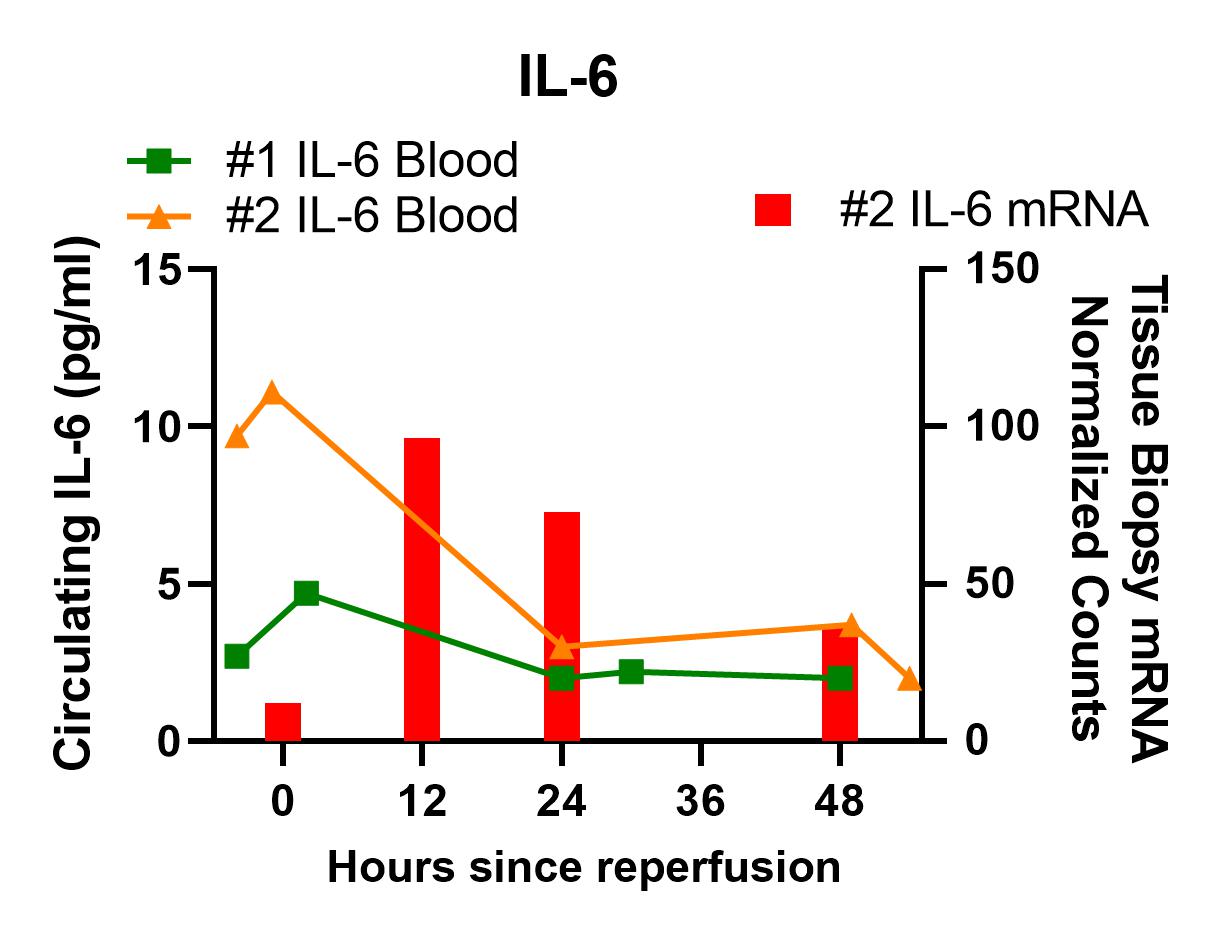Cytokine analysis of first Gal-KO renal xenotransplantation from a pig-to-human recipient
Jeffrey Stern1, Bonnie E Lonze1, Zoe A Stewart1, Massimo Mangiola1, Vasishta Tatapudi1, Weimin Zhang2, Brendan Camellato2, Bo Xia2, Jef Boeke2, Harvey Pass3, Elaina Weldon1, Nikki Lawson1, Adam Griesemer1, Brendan Keating4, Robert A Montgomery1.
1NYU Langone Transplant Institute, NYU Langone Health, New York, NY, United States; 2Department of Biochemistry and Molecular Pharmacology, NYU Grossman School of Medicine, New York, NY, United States; 3Department of Surgery/Department of Cardiothoracic Surgery, NYU Langone Health, New York, NY, United States; 4Department of Surgery, Prelman School of Medicine, University of Pennsylvania, Philadelphia, PA, United States
Background: Xenografts from genetically modified pigs have become one of the most promising solutions to the human organ shortage. Humans lack the ∝1,3-Gal glycan ubiquitously expressed on pig cells. Naturally occurring anti-∝1,3-Gal antibodies can cause hyperacute rejection of porcine xenografts. Cytokines levels change in response to systemic inflammatory or transplant environments. We report the first instance of cytokine analysis from xenotransplantation of a kidney from an ∝1,3-Gal knock-out (KO) pig to a recently deceased human.
Methods: Under a protocol approved by the NYU institutional committee two xenotransplants were performed in late 2021 on brain-dead recipients who consented their bodies for organ and research donation, but were found to have organs unsuitable for transplantation. Kidneys from ∝1,3-Gal KO pigs were transplanted into the thigh of the recipient. Immunosuppression consisted of methylprednisolone and mycophenolate mofetil until the kidneys were explanted at 54 hours. Cytokine analysis was performed as well as genetic expression for cytokines in the blood and for the second transplant biopsy tissue as well. Blood cytokines were measured in the NYU clinical laboratory. Xenotransplant tissue was obtained by needle biopsy and mRNA extracted for analysis.
Results: The xenografts immediately appeared pink and well-perfused and began to make urine. The cold ischemic times were 7 and 6 hours, respectively. Most cytokines showed no change or were undetectable in the blood. Of the detectable cytokines, IL-2 mRNA levels decreased in porcine kidney biopsy samples over the course of the second transplant but increased in the blood (this recipient had a positive CDC xenocrossmatch).

Figure 1
Blood IL-6 levels were elevated pre-transplant and decreased with time, whereas porcine kidney mRNA levels rose to a peak 12 hours post-transplant and then gradually decreased.

Figure 2
Conclusions: Our study served as proof of concept that ∝1,3-Gal KO organs can be transplanted into humans without the risk of accelerated rejection and cytokine storm. Further analysis and correlation between xenotransplant porcine tissue biopsy and circulating blood levels is warranted in future pre-clinical studies.
Research grant support was provided by Lung Biotechnology PBC, a wholly owned subsidiary of United Therapeutics. The pig kidneys were obtained from Revivicor, Inc., a subsidiary of United Therapeutics.

right-click to download
